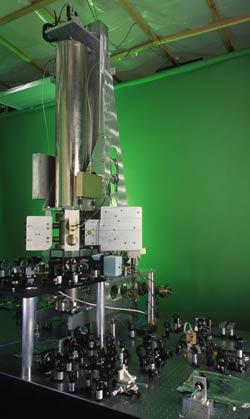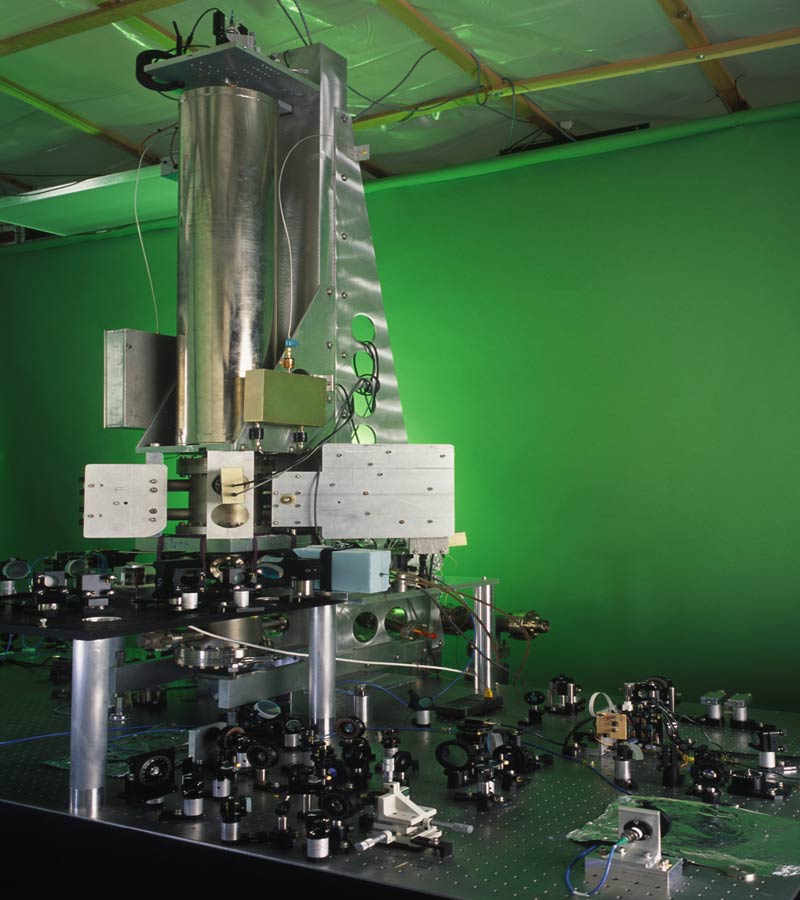Atoms Feel the Beam
When an atom emits or absorbs a photon of light, it recoils very slightly. Now a report in the 18 August PRL explains that the recoil depends not only on the photon’s energy, but also on the width of the laser beam containing it. So a centimeter-wide beam can have effects at the atomic scale. Though tiny, the effect could become important as physicists seek to improve further the accuracy of ultraprecise measuring devices that rely on light-atom interactions.
In an atomic clock, a cloud of cold atoms passes through a cavity filled with electromagnetic waves of a certain frequency. The precise frequency that maximizes the interaction between the atoms and the electromagnetic fields leads directly to the definition of the second. In a more recently invented device called an atom interferometer, atoms passing through a laser beam emerge on slightly different trajectories depending on whether they absorb a photon or not. Further manipulation of the two atom streams allows very precise measurements of the atoms, such as the difference in energy of the two atomic states involved in the photon absorption.
In both of these devices, precise measurement demands accurate knowledge of how atoms recoil when they interact with radiation. Because laser beams are normally very wide compared with the size of an atom, physicists usually calculate recoil by treating the laser mathematically as an infinitely wide plane wave. But when atoms are cooled close to absolute zero, that approximation may not be valid, because atoms “spread out” as they cool: Their so-called de Broglie wavelength–the quantum wave function that arises from wave-particle duality–may reach a centimeter or so, comparable to the typical width of a laser beam.
The laser’s electromagnetic field is not uniform over its width but is strongest at the center and dies off at the edges. So it can exert sideways forces on an atom. But it’s best not to think of this effect as lateral recoil in a classical sense, says Kurt Gibble of Pennsylvania State University in University Park. Instead, different parts of the atom’s wave function interact with different parts of the laser beam, and the effect is to distort the wave function, rather than shove it bodily to one side or the other.
This sideways distortion, Gibble finds, can have measurable consequences even when atoms and photons collide head-on. It results in a change–at the level of parts per billion–in the backward recoil of an atom that emits or absorbs a photon.
For a typical atomic clock, Gibble estimates that the change in atomic recoil leads to an error in the resonant frequency of about 5 parts in which is about a factor of ten smaller than the precision that the best atomic clocks have achieved thus far. But Gibble’s calculations present “a new challenge for ultraprecise atom interferometer experiments,” says Alex Cronin of the University of Arizona in Tucson. For example, he says, investigations of atomic transition frequencies rely directly on recoil measurements with interferometers, and as precision improves, researchers will have to minimize or correct for Gibble’s recoil effect.
–David Lindley
David Lindley is a freelance science writer in Alexandria, Virginia.





